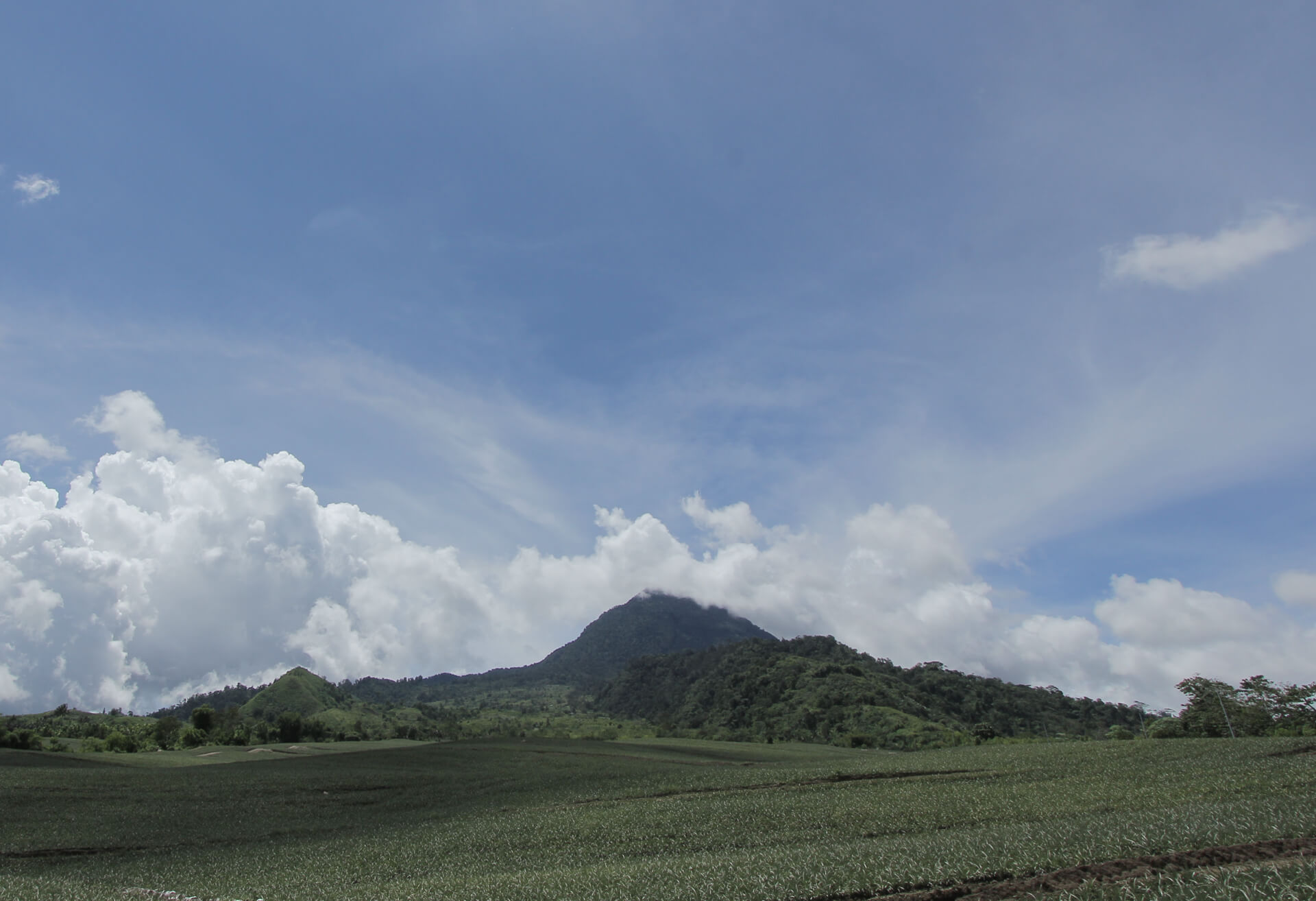How To Grind Coffee Beans With and Without a Grinder
The perfect cup of coffee. It’s every coffee lover’s dream, but perceptions of perfection vary, so how do you achieve your perfect cup of coffee? There are several factors, aside from the quality of your whole beans, that will determine whether your cup of coffee is perfect for you. One of the most important factors is the quality of your ground coffee; where the quality of your coffee bean grinder will make a huge difference to the taste of your brew.
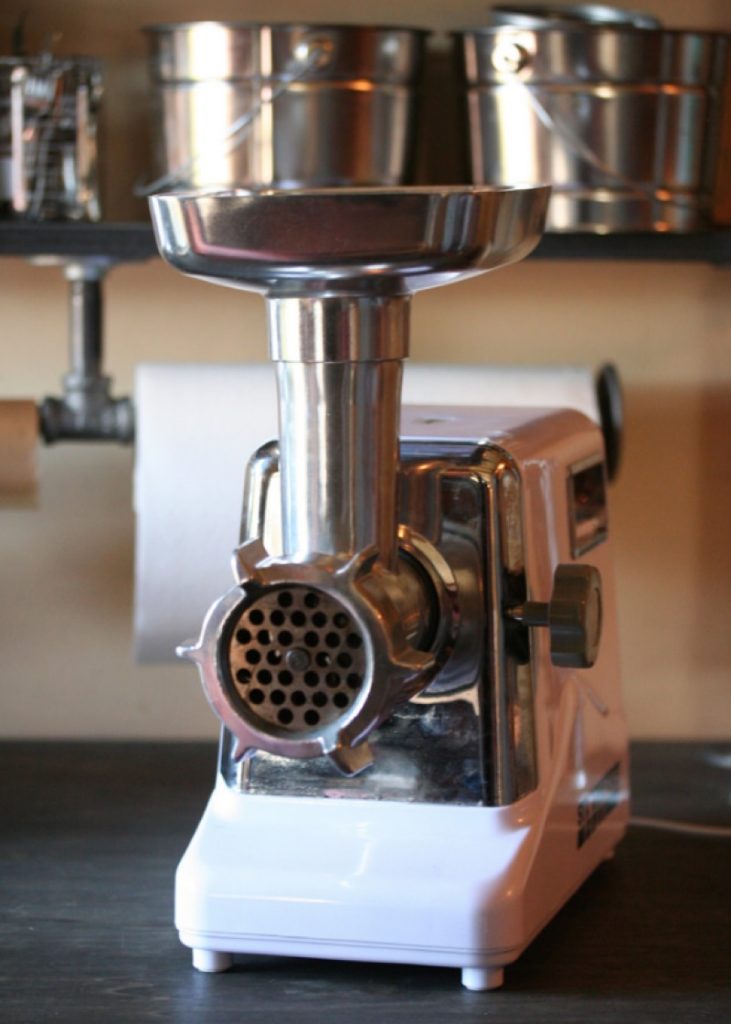
Picture of a coffee grinder by Aaron Patterson; CC
Here we provide key information on how best to use a coffee grinder to ensure that you get the best tasting cup of Kopi Luwak possible.
How To Use A Coffee Grinder
For the utmost quality it is important that your coffee beans are ground immediately before use. Coarse grinds shouldn’t set for more than a few minutes before brewing; whereas fine grinds should be used within one minute of grinding. Leaving longer than this will result in the flavor of the beans starting to dissipate and the quality of the coffee to deteriorate.
There are two primary types of coffee bean grinders
• A burr grinder will yield the best ground coffee. Its two cutting discs, called burrs, are adjustable, and the fineness of the grind is determined by the distance between the two burrs. Burr grinders are available in automatic and manual options; the manual option is less expensive and more portable, but it is also more labor intensive.
• A blade grinder may produce less uniformity in the finished product because of user inconsistency. Grinding times of a few seconds can make a substantial difference in the quality of the coffee. A blade grinder has blades similar to those in a blender, and there’s a small container for the beans. The blades are at the bottom. Some blade grinders have settings for fine, medium, or coarse grind, and for the number of cups to be brewed, from four to 12 cups. Blade grinders are available as electric coffee bean grinders only.
Measuring your whole beans on a scale provides greater quantity accuracy than does a scoop or other measuring device. This is another factor in achieving a consistently great cup of coffee.
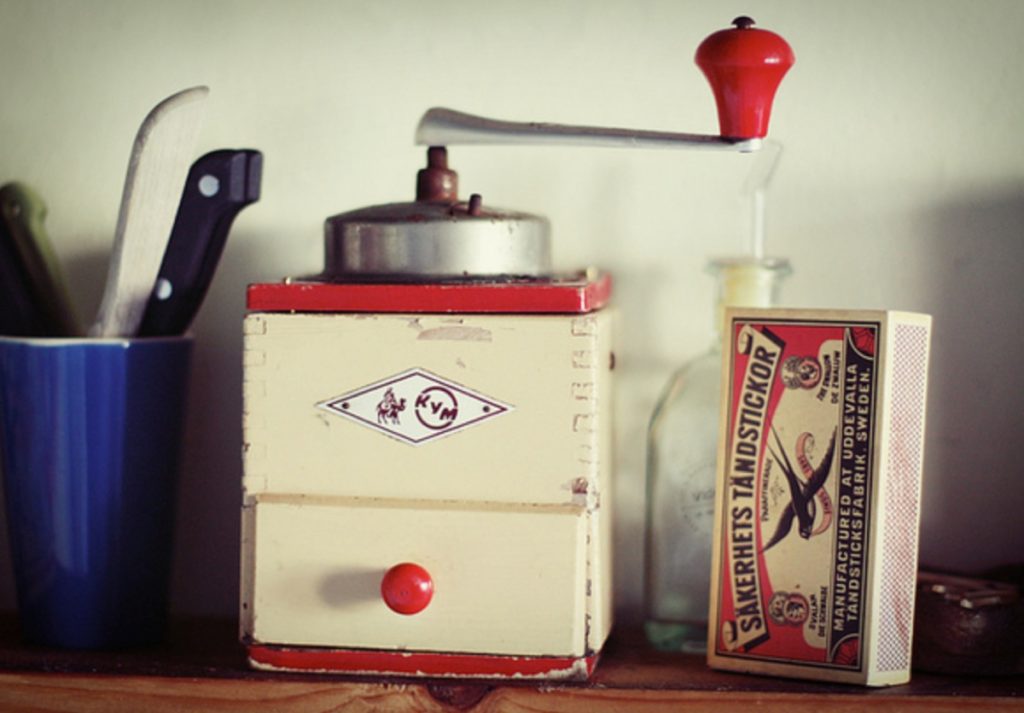
Manual coffee grinder picture by Suzette: CC
The grinding of coffee beans involves more than just dumping beans into a grinder. The type of coffee maker you have, the number of cups you’re brewing, and the type of coffee you’re making will determine how to use a grinder to make the best cup of coffee. The ground coffee size needed will depend on the type of brewing device you’re using and the type of coffee you’re making.
If you’re wondering what is coarse ground coffee (how should it look), well it should be about the size of the kosher salt that’s used for pickling or canning.
It is the brewing method that ultimately determines the size of your ground coffee. The less time the ground up coffee will be in contact with water, the finer the ground that should be used. The more time the ground up coffee will be in contact with the water, the coarser the grind. Using the wrong grind can result in very weak or very strong coffee, and it may end up being very bitter.
How much ground coffee per cup that you’ll need depends on the grind and your strength preference; you may need to experiment in order to find the perfect combination for your taste buds. In general, the more ground coffee you use, the stronger the brew – but a tablespoon of extra fine grind will be substantially stronger than a tablespoon of coarse grind.
Whole Bean And Ground Coffee Storage
Coffee beans should be stored in an airtight, opaque container at room temperatures.
Light can compromise the quality of your whole beans so the container shouldn’t be clear glass. Heat, light, and moisture are all detrimental to the quality of coffee beans and ground coffee.
Coffee beans shouldn’t be stored in the freezer because they can develop freezer burn. Neither should they be stored in a warm location, such as near the stove, because the heat can deteriorate their quality. Although you should grind beans just before using them, ground coffee storage guidelines are the same as those for whole bean coffee.
How To Grind Coffee Without A Grinder
If you don’t have a coffee grinder, obtaining one isn’t feasible at the moment, and you’re wondering how to grind coffee beans without a grinder, well the good news is that it’s probably not as difficult as you may think. After all, coffee was ground long before electricity was invented.
Standard Blender Method
A regular blender can be used to grind whole beans, but there are some caveats.
• Make sure your blender container and blades are very clean, you don’t want your coffee to taste like chopped onions or your last blueberry smoothie.
• Start with a few beans and add more gradually.
• Use a pulse setting rather than a continuous grind. Otherwise, the blades can heat up the beans and cause their oils to become rancid.
• Be sure to keep the lid on during grinding so that you don’t have coffee beans all over the room.
• Clean the container and blades thoroughly so that your next smoothie doesn’t taste like old coffee.
This method is best for coarsely ground beans, be sure to grind only the amount you’ll need right away.
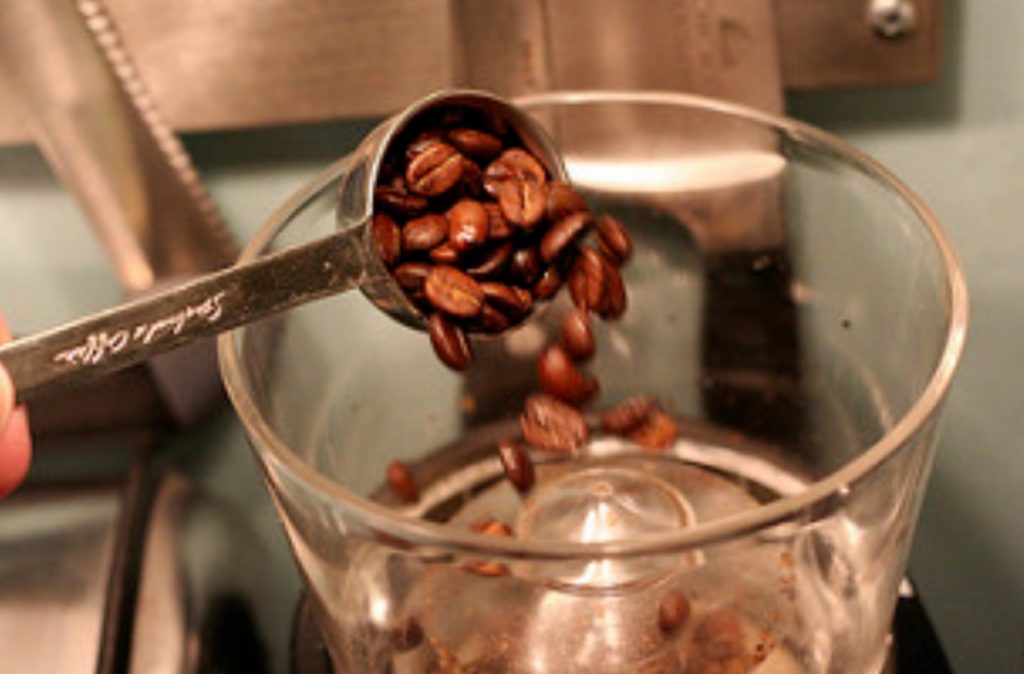
Grinding coffee without a grinder photograph by David Joyce; CC
Mortar And Pestle Method
If you lack a grinder but need coffee, this is the method recommended by professional chefs. The mortar and pestle system was originally used to crush nuts, seeds, berries, spices, and other seasonings. It will do an excellent, if rather labor-intensive, job of grinding coffee beans.
• Place a small amount of beans in your mortar and begin grinding with the pestle. Use your dominant hand for grinding as this will require some effort.
• Use force to press the pestle into the beans to crush them.
• Continue crushing and rolling, then adding beans as necessary to achieve the desired grind and the amount of grounds needed.
• Clean the mortar and pestle thoroughly so that it’s ready the next time you need it.
The mortar and pestle method is best for finely or very finely ground coffee.
Rolling Pin Method
A rolling pin is excellent for crushing and grinding coffee. Your grounds will have a more consistent texture and it may be easier for some than using the mortar and pestle coffee grinding method. A marble rolling pin may help with the labor intensity.
• Measure your coffee beans. Then place them between sheets of parchment paper or in a heavy plastic bag.
• Lay the bag or paper flat on a counter then press firmly as you roll.
• Continue pressing and rolling until the proper consistency is achieved, then remove the grounds and brew your coffee.
This method will work satisfactorily for all sized grinds of coffee; more rolling and pressing is necessary for a finer grind, less for a coarser grind.
The Hammer Method
A hammer, meat tenderizer, or a mallet can crush and grind beans very quickly but it can also damage your hand or your counter, so exercise caution.
• Measure your coffee beans; next place them in a heavy plastic bag or between sheets of parchment paper.
• Use the hammer to press down on the beans until they are broken up and start to reduce in size.
• Continue to jostle the bag so that all the beans grind to the same consistency.
This method works best for coarse to medium ground coffee; it does not work well for very finely ground coffee.
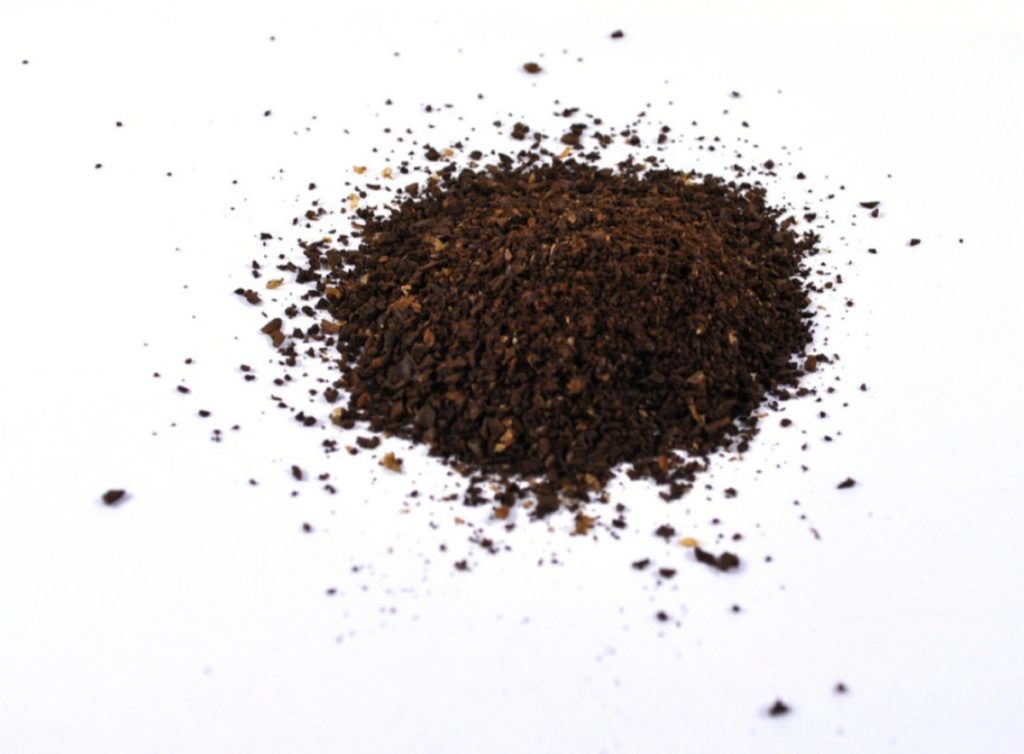
Picture of ground up coffee by Joe King: CC
Butcher Knife Method
This is probably the most difficult method for grinding coffee unless you’ve had chef training.
• Place the coffee beans directly on a cutting surface. A cutting board is better so you don’t damage your counter.
• Lay the knife flat on the beans and press firmly until the beans break.
• Continue to press while you pull the flat knife blade toward you. This will grind the beans, but may take some practice.
This method is best for a medium fine or medium grind.
So if you were wondering about grinding coffee without a grinder, yes, it’s possible, it’s just less convenient than using an electric coffee grinder.
Common Ground Coffee Grades And Their Use In Coffee Brewing Devices
The type of coffee grind used depends on the type of coffee being made and the type of brewing device that’s used.
Grounds in conical drip coffee makers have less contact with water, which is the process that makes the aromatic beverage we all adore. Since the water contact with the grounds is very brief, the grounds need to be fine or very fine.
Flat-bottomed basket drip coffee makers have a little more contact time so they can use a somewhat coarser grind.
The hot water in a French press has a much longer contact time with the water, so it’s best to use a coarse grind for this type of coffee maker or for cupping.
Types Of Coffee Grinds
• Powder-fine grounds are the hallmark of Turkish coffee and are unique to it.
• Fine grinds, finer than granulated sugar but not a powder, are for conical, drip coffeemakers or espresso machines.
• Medium grind particles, about the size of sugar or table salt, are for flat-bottomed drip machines.
• Coarsely ground coffee, about the size of pickling or canning salt, is best for a French press or cupping.
• Extra coarse grind is used for cold brewing.
We hope that you have enjoyed this article on how to grind coffee and choose the ideal grind size for your coffee brewing method. You may also enjoy some of our other articles such as Chemix brewing guide, brewing coffee without a machine, and eating coffee beans.
